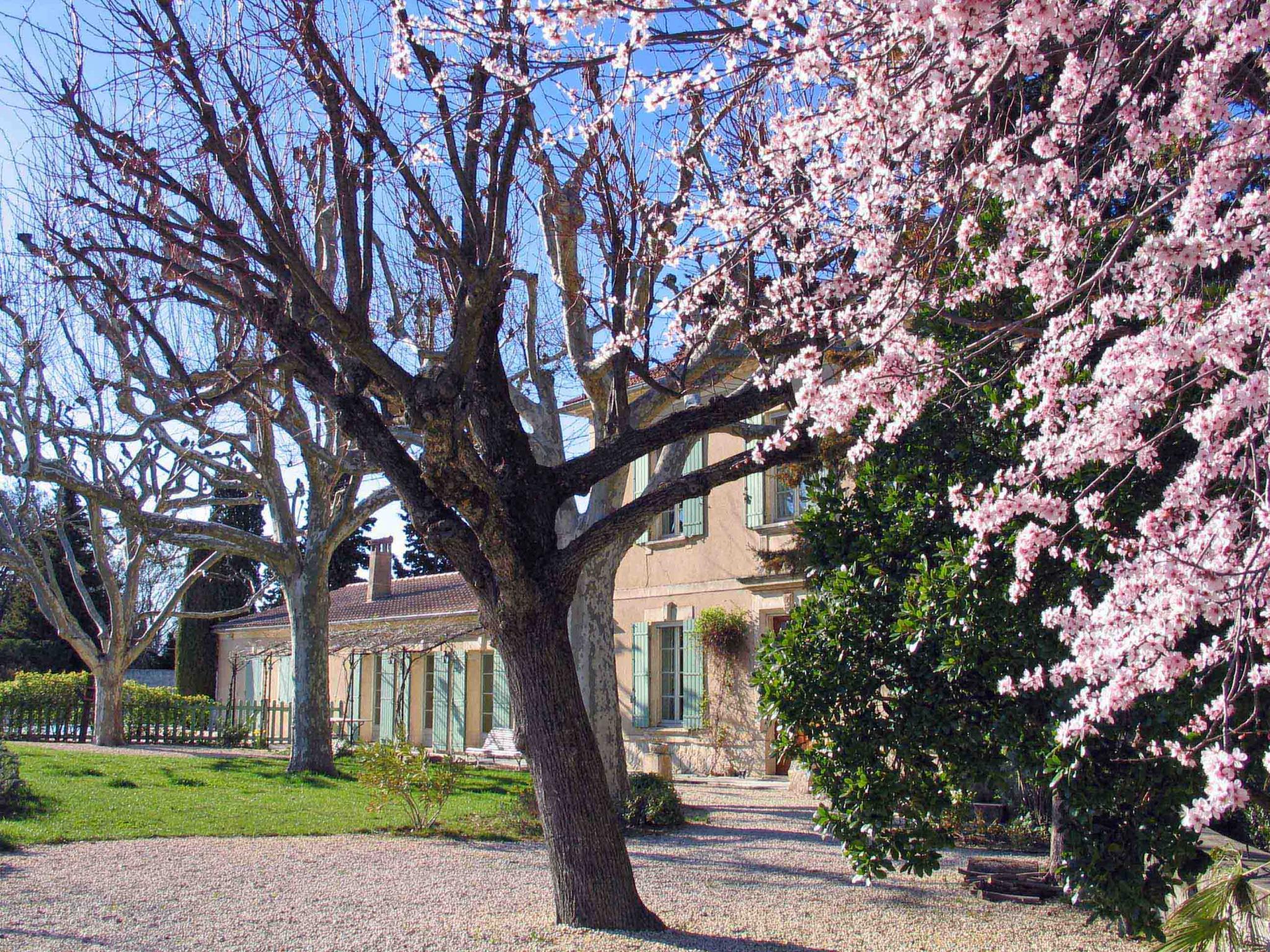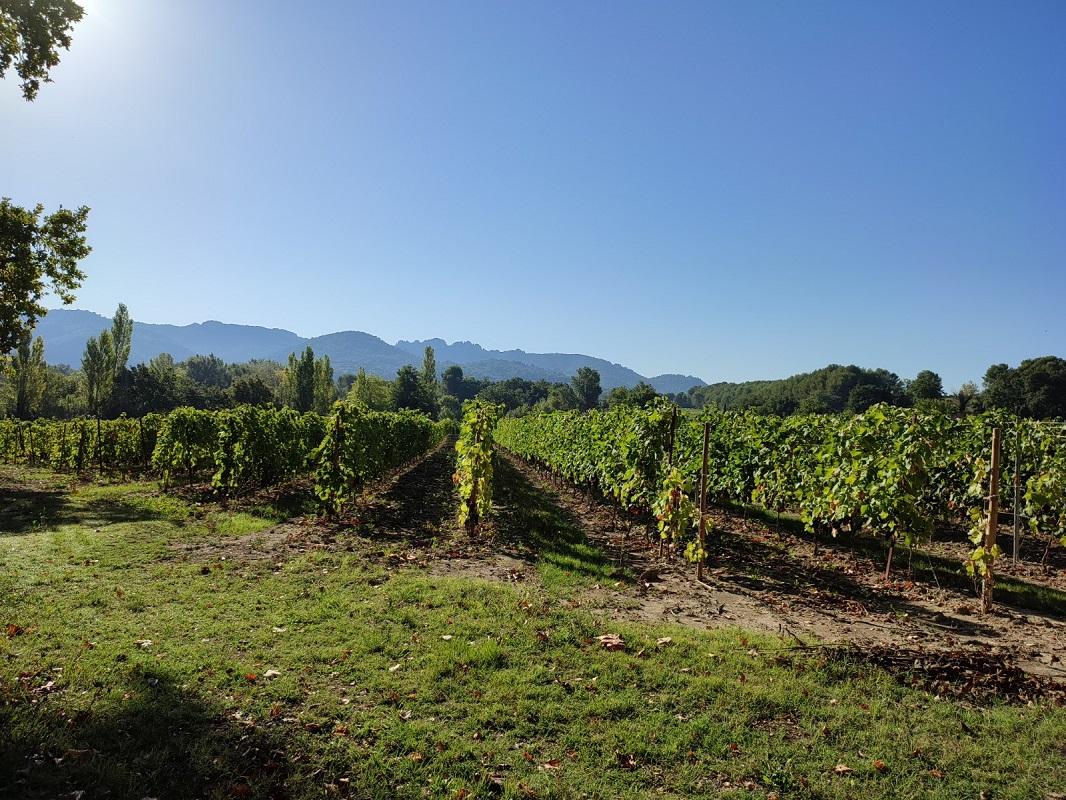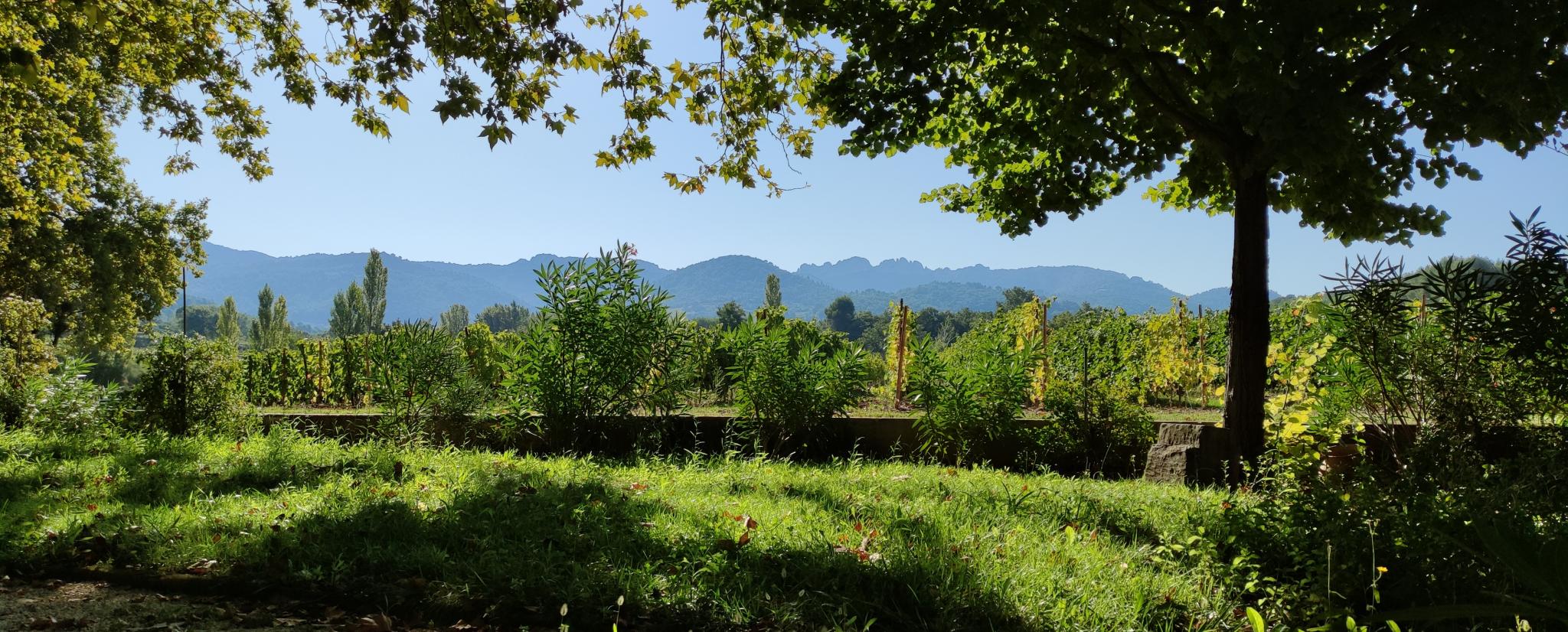A "love at first - sight" purchase in 2006
Since 2006, the Quiot Family, charmed by the Dentelles de Montmirail and its products of character, owns the Château du Trignon in order to perpetuate it, while expanding it by 10 ha of Vacqueyras and few hectares of Beaume-de-Venise.
"Respectful of achievement but rich of our wine-maker knowledge, we have adopted this land whose singularity fits in with all our others properties, in the same line of tradition, quality and adaptation."
And before ?
Since 1886, Trignon Castle was exploited by another winemaker family. The domaine was a traditional provençal farm of the time, with mixed and livestock farming. Since then, 5 generations have refocused the farm on the vine and expanded the area. Between 1960 and 1990, a qualitative approach is also underway with the construction of a gravity winery, the adaptation of grape varieties plantation on the land and the air-conditioning of the cellar.
"Respectful of achievement but rich of our wine-maker knowledge, we have adopted this land whose singularity fits in with all our others properties, in the same line of tradition, quality and adaptation."
And before ?
Since 1886, Trignon Castle was exploited by another winemaker family. The domaine was a traditional provençal farm of the time, with mixed and livestock farming. Since then, 5 generations have refocused the farm on the vine and expanded the area. Between 1960 and 1990, a qualitative approach is also underway with the construction of a gravity winery, the adaptation of grape varieties plantation on the land and the air-conditioning of the cellar.
Origin of the name : the Trignon
The “Trignon” is the small stream that runs alongside the property and the castle. It then flows into the Ouvèze.
Anecdote :
In 1992, the Trignon was unleashed during the big rainy episodes in autumn. The harvest was destroyed, the cellar ransacked and under water. In memories, the mark on the wall indicating the rising waters is still here.
Anecdote :
In 1992, the Trignon was unleashed during the big rainy episodes in autumn. The harvest was destroyed, the cellar ransacked and under water. In memories, the mark on the wall indicating the rising waters is still here.
Exceptional terroirs
The domaine being spread over many appellations, there is a micro climate and terroirs juxtaposition which gives it a beautiful richness.
It stretches from the great plains of the Plan de Dieu to the high terraces of the Gigondas mountains. From beautiful alluvial lands dotted with rolled pebbles to more arid and limestone lands.
A climate also contrasted between the scorching summer heat of the basins and cooler air, even very windy some places.
A patchwork making each plot unique.
It stretches from the great plains of the Plan de Dieu to the high terraces of the Gigondas mountains. From beautiful alluvial lands dotted with rolled pebbles to more arid and limestone lands.
A climate also contrasted between the scorching summer heat of the basins and cooler air, even very windy some places.
A patchwork making each plot unique.
Vinification on the domaine
The domaine naturally vinifies its own wines.
A gravity cellar was built in the seventies. Back then, this process was revolutionary. The traditional concrete vats are next to stainless steel vats with more technology for the white and rosés wines vinification.
The harvest is sorted on a sorting table.
A wooden aging cellar allows the tannins to be refined, in containers of different volumes, from 228 liter pieces to 40hl casks.
A gravity cellar was built in the seventies. Back then, this process was revolutionary. The traditional concrete vats are next to stainless steel vats with more technology for the white and rosés wines vinification.
The harvest is sorted on a sorting table.
A wooden aging cellar allows the tannins to be refined, in containers of different volumes, from 228 liter pieces to 40hl casks.
A historical cultural respect
For more than 20 years, at the Château du Trignon, we have been trying to set up an agriculture that can respect biodiversity and gentler cultivation practices, depending on the plots, their age, their vigor, their climate, their terroir, their grape variety... each plot is individualized in its cultivation mode. At Château du Trignon, this respect for the vineyard and its terroir is not a response to a fad, but it is a deep-rooted habit that can always be improved.




